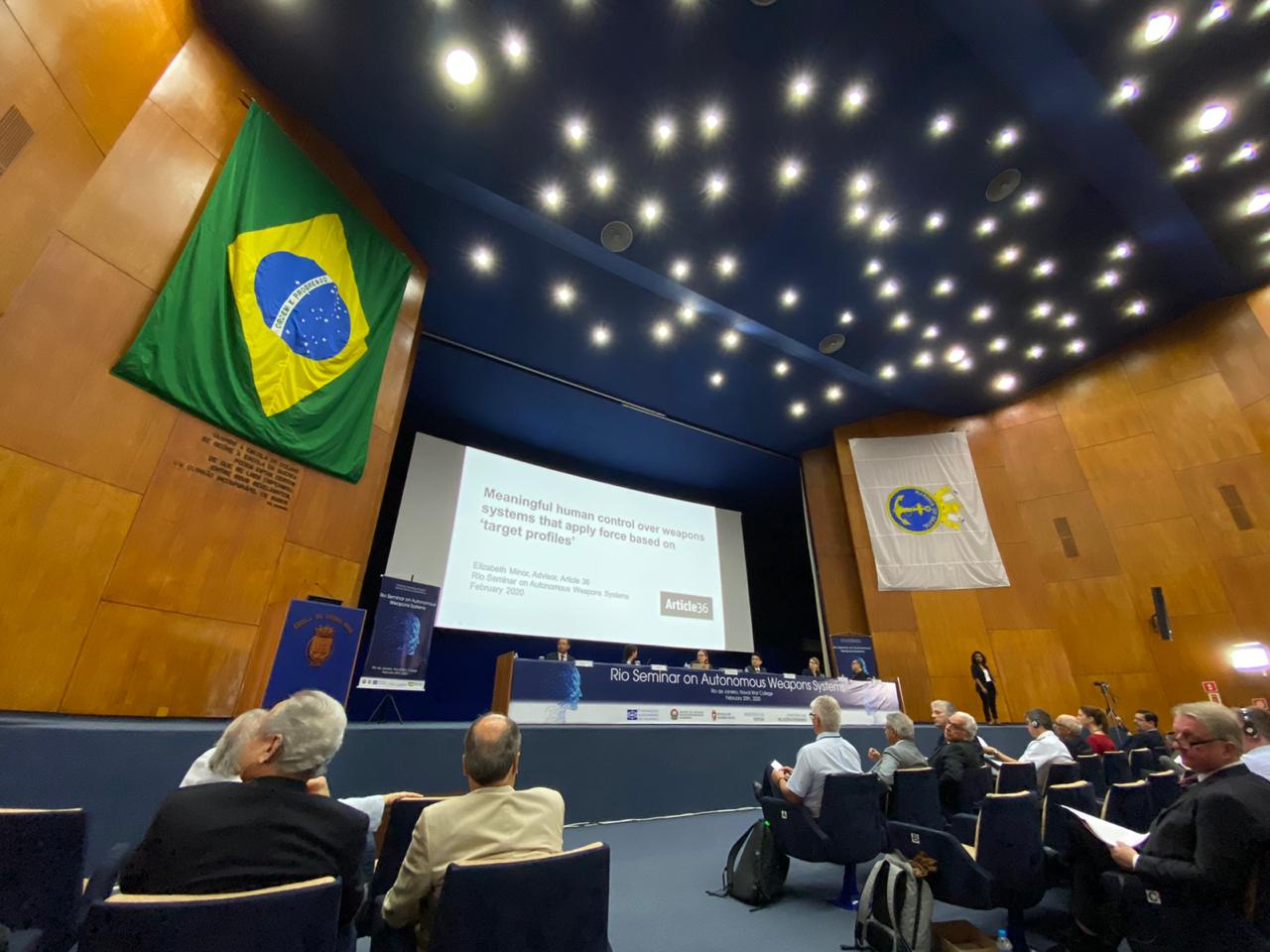
18.03.20
Autonomy in weapons systems – considering approaches to regulation
By Richard Moyes
This new short paper aims to assist thinking about the relationship between regulatory options and our conceptualisation of the subject matter in discussions on autonomy in weapons systems.
The international discussion on autonomy in weapons systems is rendered challenging by diverse starting assumptions about both the parameters of the subject matter and the types of regulation that are being sought. The adoption of the wording ‘lethal autonomous weapons’ (LAWS) as an organising term in the debate at the Convention on Certain Conventional Weapons (CCW) promotes certain assumptions that the issue in question can be usefully approached with reference to a single distinct weapon category. The utility of such a ‘single label’ approach is however uncertain – and is certainly only one of a number of approaches that could be taken.
All of the diverse systems that have been put on table as raising questions with respect to autonomy share a process of functioning whereby force is applied directly as a result of calculations based on certain sensor inputs, and without a human evaluation of those sensor inputs. The underpinning features of concerns about autonomy are a combination of both the sensor-calculation-force process and the human relationship to the ‘envelope’ of time and space within which that sensor-force process is functioning. Human control in this context is primarily dependent upon understanding the functioning of the sensor-calculation-force process and understanding the context within which that function will operate.
Some key parameters that could be subject to management are as follows:
Sensor-calculation-force process:
- What patterns of sensor data are considered a ‘target’ (target profile)?
- What objects or phenomena fall within the target profile(s)?
- How were the target profiles constructed?
- Can the target profile(s) change during an attack?
- What type of force does the system apply?
- How many applications of force can it undertake during an attack?
Human relationship to that process:
- Can the target profile(s) be practically understood?
- When will the process start?
- How long will that process function for?
- Where will it function?
- What is known about the context of functioning – including objects or phenomena that will fall within the target profile, and any potentially adjacent collateral risks?
In the politics of the current CCW discussion, there has been increasing recognition that the matter of ‘human control’ or ‘human-machine interaction’ is the key area for collective work. This has been evident in states’ interventions to the CCW’s meetings, at the Rio Seminar on Lethal Autonomous Weapons Systems held by the government of Brazil in February 2020 (where Article 36 contributed to a panel on the subject) and in the agenda of the upcoming meeting hosted by the government of Germany on LAWS.
At the Rio seminar, various participants also announced their countries’ intentions to hold additional meetings on LAWS: further to Germany’s meeting (now rescheduled to take place online in April), Japan intends to hold a regionally-focused meeting in the first week of December, and Austria is aiming to hold a meeting towards the end of February 2020. The intention of governments to move discussion forward through different forums is encouraging (though these resources might have been usefully deployed during or to support a negotiating process when this emerges). The reiteration by certain participants – such as Austria, Brazil and Chile – of their governments’ continued support for the negotiation of a legally-binding instrument to ensure meaningful human control was also positive.
Nevertheless, there is a striking absence of detailed proposals regarding what might be done. In 2020 and 2021 the credibility of multilateral responses to the issues raised by autonomy in weapons systems will likely hinge on states’ ability to build a shared conceptual framework and agreement on the key problematic issues within that framework. To that end, focused proposals by individual states are likely needed in order to spur discussion. States are likely to concentrate their discussions at the CCW this year on the ‘operationalisation’ of the Guiding Principles. Though this is unlikely in itself to lead straightforwardly to adequate steps towards international regulation, it gives some opportunity for countries to develop more detailed proposals, in particular in relation to guiding principle ‘c’ on ‘human-machine interaction’.
Download this paper
Read more
Autonomy in weapons systems: mapping a structure for regulation through specific policy questions, Policy note, November 2019
Targeting people, Policy note, November 2019
Target profiles as a basis for rule-making in discussions on autonomy in weapons systems, Discussion paper, August 2019
Critical Commentary on the “Guiding Principles”, Policy note, November 2019
Featured image: Rio seminar on autonomous weapons, held in February 2020 (Campaign to Stop Killer Robots)
